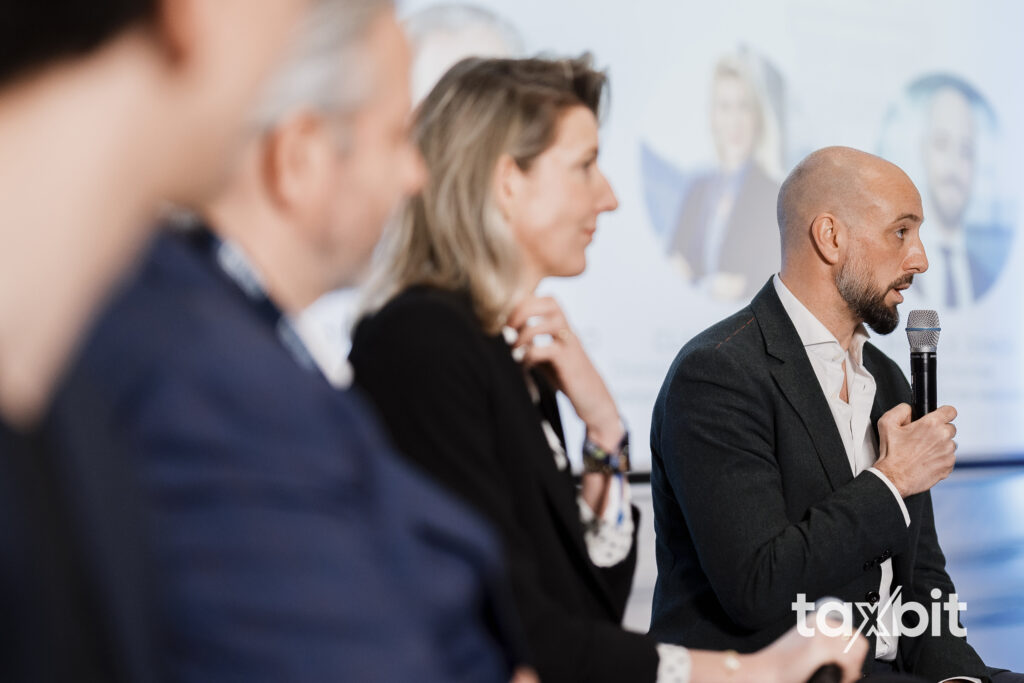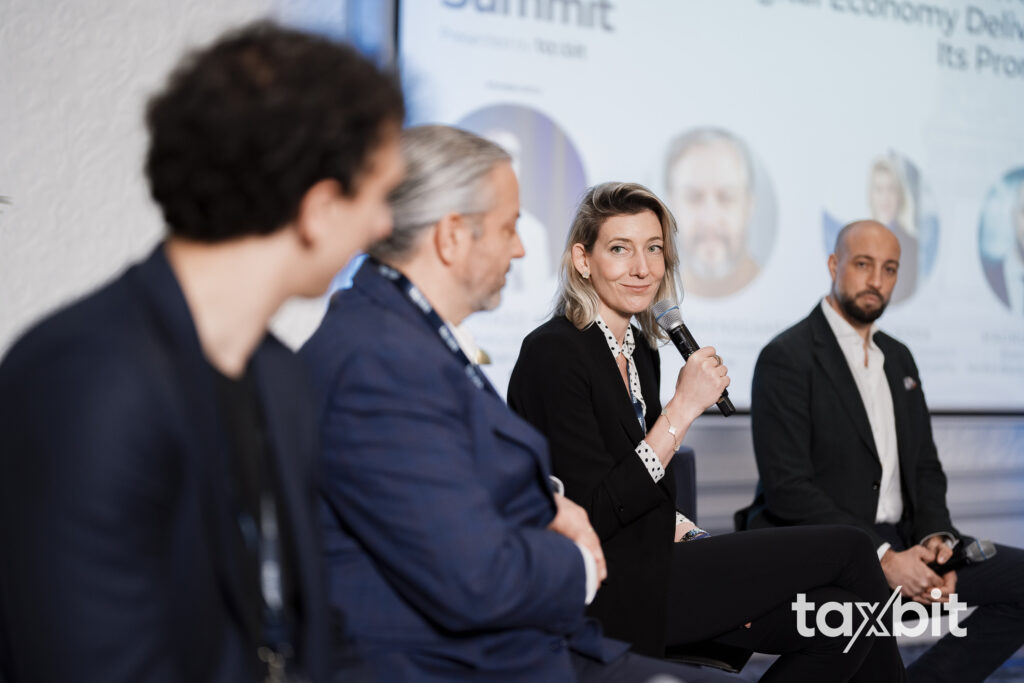The conversation around tokenization of real-world assets (RWAs) has matured significantly in the past year—but we’re still in the early innings. At the Digital Accord Summit, a standout panel “Tokenization of RWA: The Digital Economy Delivering Its Promise?” explored the promise, pitfalls, and real policy considerations that will shape how tokenization becomes a functional part of our economic systems.
Moderated by Tommaso Astazi, Policy Director, Blockchain for Europe, the panel brought together key voices including:
- Clara Guerra, Director, Office for Digital Innovation
- Pelle Braendgaard, CEO and Co-Founder, Notabene
- Magnus Jones, Board Member, Nordics Blockchain Association
What emerged was a clear-eyed discussion: tokenization isn’t just about engineering breakthroughs—it’s about building meaningful legal and operational frameworks that enable adoption.

Tokenization Isn’t a Technical Problem—It’s a Legal and Operational One
One of the most important takeaways was that successful tokenization doesn’t start with code. It starts with law, clarity, and enforceability. Guerra provided a standout example with Liechtenstein’s early legislation—the so-called “token container model”—which legally distinguishes between a token and the right it represents. This creates legal certainty around ownership and transfer, which is critical when you’re dealing with tokenized representations of real-world items, from securities to property.
This legal abstraction layer might sound obvious, but it’s still missing in many jurisdictions. And without it, tokenization efforts remain legally ambiguous, which hinders enterprise adoption. As Guerra noted, “We introduced the token as a legal object into our civil law system”—an underappreciated but foundational step for enabling real-world asset markets to flourish.
Engineers Built the Pipes—Now It’s Time to Add Meaning
From the technical side, Braendgaard offered a valuable critique of the blockchain space’s inward-looking habits. While engineers have built incredibly powerful settlement layers, much of the ecosystem still lacks contextual and contractual meaning.
“The crypto industry has been operating for years on public ledgers where the only thing that mattered was the market price,” he said. But in the world of tokenized RWAs, context is king. Without knowing what a token represents, where it came from, or who is involved, it’s difficult to comply with regulations—or to create systems the real economy can trust.
This is where Braendgaard sees the next frontier: building a private, compliant messaging layer that communicates what tokens mean in legal, regulatory, and accounting terms. Notabene’s work on the Travel Rule is one example of how compliance tooling can be layered into crypto infrastructure in a meaningful way.
Tokenization Without Tax Strategy Is a Road to Nowhere
Perhaps the most pragmatic and overlooked piece of the tokenization puzzle is tax. As Jones made crystal clear, most projects are failing not because of bad tech, but because of poor planning. “They start with the tech, forget the tax, and crash at the legal layer,” he said, citing projects that didn’t consider VAT, capital gains, or international tax exposure until it was too late.

His advice? Start with a comprehensive, global tax strategy—or risk massive fines and legal exposure. That’s especially critical in cross-border tokenization use cases, where rules around beneficial ownership, KYC, and sales taxes vary widely.
Jones also made a compelling point about the myth of decentralization. In theory, trustless systems reduce friction. In practice, real-world finance still needs trusted intermediaries. “The irony is that decentralization will only scale if trusted, centralized players help bridge the gap,” he argued—especially for traditional institutions dipping their toes into digital assets.
What’s Working—and Where the Real Value Lies
Tokenization is already showing value in back-office use cases. Stablecoin payments, settlement efficiency, and private blockchain integrations with ERP systems (like SAP) are becoming real drivers of adoption—because they lower costs, improve reconciliation, and reduce friction in multi-jurisdictional commerce.
What isn’t working, at least not yet, is the tokenization of highly illiquid or hard-to-verify assets like real estate, collectibles, or IP. Until land registries, patent offices, and other public databases are interoperable with blockchain systems, the legal enforceability of tokenized ownership will remain limited.

But progress is happening—and importantly, the focus is shifting from hype to utility. As Guerra put it, “Our approach is to aim for progress, not perfection. We’d rather move boldly ahead than wait for a perfect system.”
Final Thoughts: Trust is the Real Infrastructure
If there’s one word that echoed throughout this session, it was trust. Not in the blockchain sense of “trustless systems,” but in the human, institutional, and legal sense. Trust is what makes asset transfers enforceable. It’s what makes investors confident. And it’s what makes regulators willing to engage.
Tokenization is no longer just a future-forward concept—it’s a growing reality. But for it to scale meaningfully, we need a shared language between code, contracts, and compliance. That means lawyers and engineers working side by side. It means policymakers looking beyond securities law to civil law. And it means product teams understanding that tax, audit, and legal questions are not afterthoughts—they are prerequisites for innovation.
The takeaway is simple: tokenization can deliver on the promise of a digital economy—but only if we take seriously the infrastructure of trust that underpins it.
To learn more, watch the full panel discussion on demand today.








